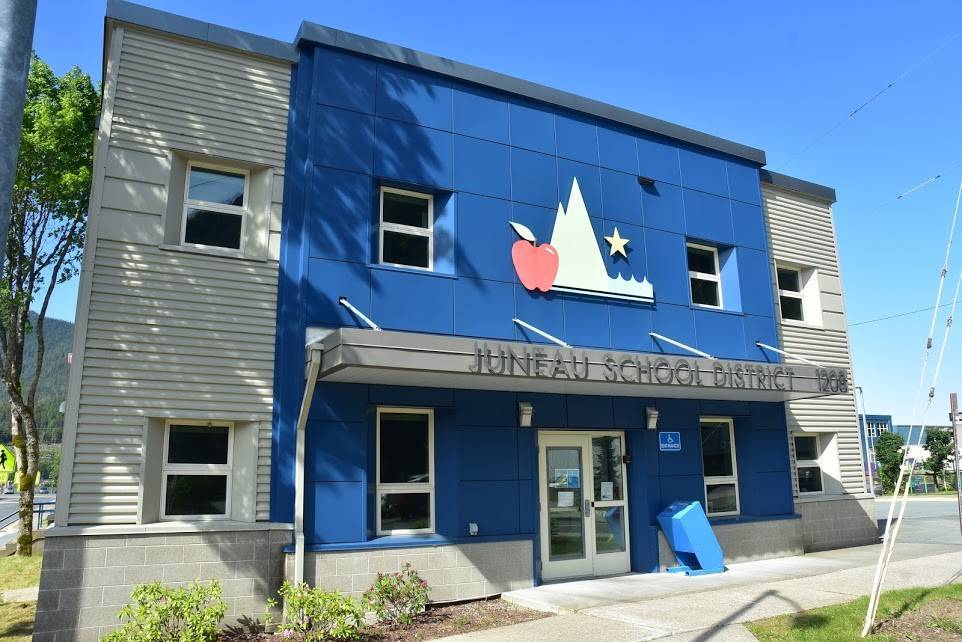By Win Gruenning
If you haven’t yet bookmarked this website, you should: CovidActNow.org.
Juneau’s overall COVID numbers are the best of any urban area in the state.
Still, despite the science, Juneau classrooms have been off-limits to most students for seven months and there has been little urgency to get students back. This, despite CDC guidelines and mounting evidence that the damage to our kids far outweighs potential reopening risks from the coronavirus.
Some Alaska school districts realized this, opening with in-person classes while allowing families to opt for distance learning if desired.
Initially, the Juneau School District announced starting school with a hybrid model — a mixture of in-person and distance learning. Unexpectedly, just weeks before school began, those plans were scrapped in favor of all-remote learning.
JSD’s announcement explained their decision was made in consideration of evolving guidance from state education and city health officials. Their plan, SMART START 2020, was “designed to be a moving scale with decisions made dependent on current conditions.” It considers “many complicating factors and will continue to evolve as [it progresses] in the coming weeks.”
This week, JSD officials began considering a reopening plan. But, unlike other school districts that have reopened, JSD’s plan contains no objective criteria for determining when in-person classes will resume. This leaves parents and students at the whim of district officials who cannot articulate when it’s “safe” to return.
The 44-school Kenai School District reopened its schools in September. The district’s own COVID-19 dashboard monitors each community’s numbers and objectively rates its risk environment based on case counts and trends. Kenai’s COVID-19 numbers are higher than Juneau’s numbers, however, mitigation measures are designed to keep students in classrooms whenever possible. Occasionally, temporary school closures are necessary, but parents and students at least know why.
Juneau’s teachers union objects to returning to work until it’s absolutely safe. Does that mean when a vaccine is available, and students and staff have been inoculated? That’s unlikely to happen before the end of the 2020-2021 school year, at the earliest.
Can our community afford the damaging social, emotional and economic effects of keeping students at home this long?
In Anchorage, where COVID-19 cases are surging and in-person classes have been postponed again, School Superintendent Deena Bishop delivered a passionate plea to the school board to consider the negative impacts on students. “We are not doing a good job of educating our young people with distance delivery,” she said.
Bishop said Anchorage likely won’t be at “medium-risk” for coronavirus spread for at least a year and “we cannot wait a year to educate our children in buildings.” She became emotional when saying, “COVID is killing our children in more ways than one. And we need to stand for children today.”
Bishop’s comments underscore the difficulties inherent in virtual education. Remote learning, especially for earlier grades, is a lousy substitute for in-classroom instruction. Younger children require monitoring and continuity of instruction as well as help navigating required technology. Parents forced to stay at home with their children are often ill-equipped to provide it.
Parents are finding that virtual instruction is, at best, disappointing, at worst, unacceptable.
In Juneau high schools, teaching only four days of classes per week, JSD may not reach the state-mandated 900 hours of academic year instruction. Quality of instruction can vary widely depending on the experience and comfort level a teacher has with remote delivery. Actual instruction may last only 20-30 minutes with students on their own to continue studying. Teachers sometimes read directly from textbooks, knowing many students won’t complete reading assignments. Some students have yet to meet their teachers and some “hands-on” classes, like shop, may be just another “study period” with no instruction.
Lacking needed structure and teacher engagement, more students are failing classes. No wonder some families have opted in favor of home schooling, private tutoring or established correspondence courses.
Bars, banks, restaurants, hairdressers, as well as grocery, liquor and marijuana stores are open, all apparently essential. Even our high school football team has been practicing.
Isn’t our children’s education at least as essential as these activities?
Juneau’s numbers prove we can implement mitigation strategies to keep students and teachers safe.
It’s time to question Juneau’s educational priorities.
• Win Gruening retired as the senior vice president in charge of business banking for Key Bank in 2012. He was born and raised in Juneau and is active in community affairs as a 30-plus year member of Juneau Downtown Rotary Club and has been involved in various local and statewide organizations. Columns, My Turns and Letters to the Editor represent the view of the author, not the view of the Juneau Empire. Have something to say? Here’s how to submit a My Turn or letter.

